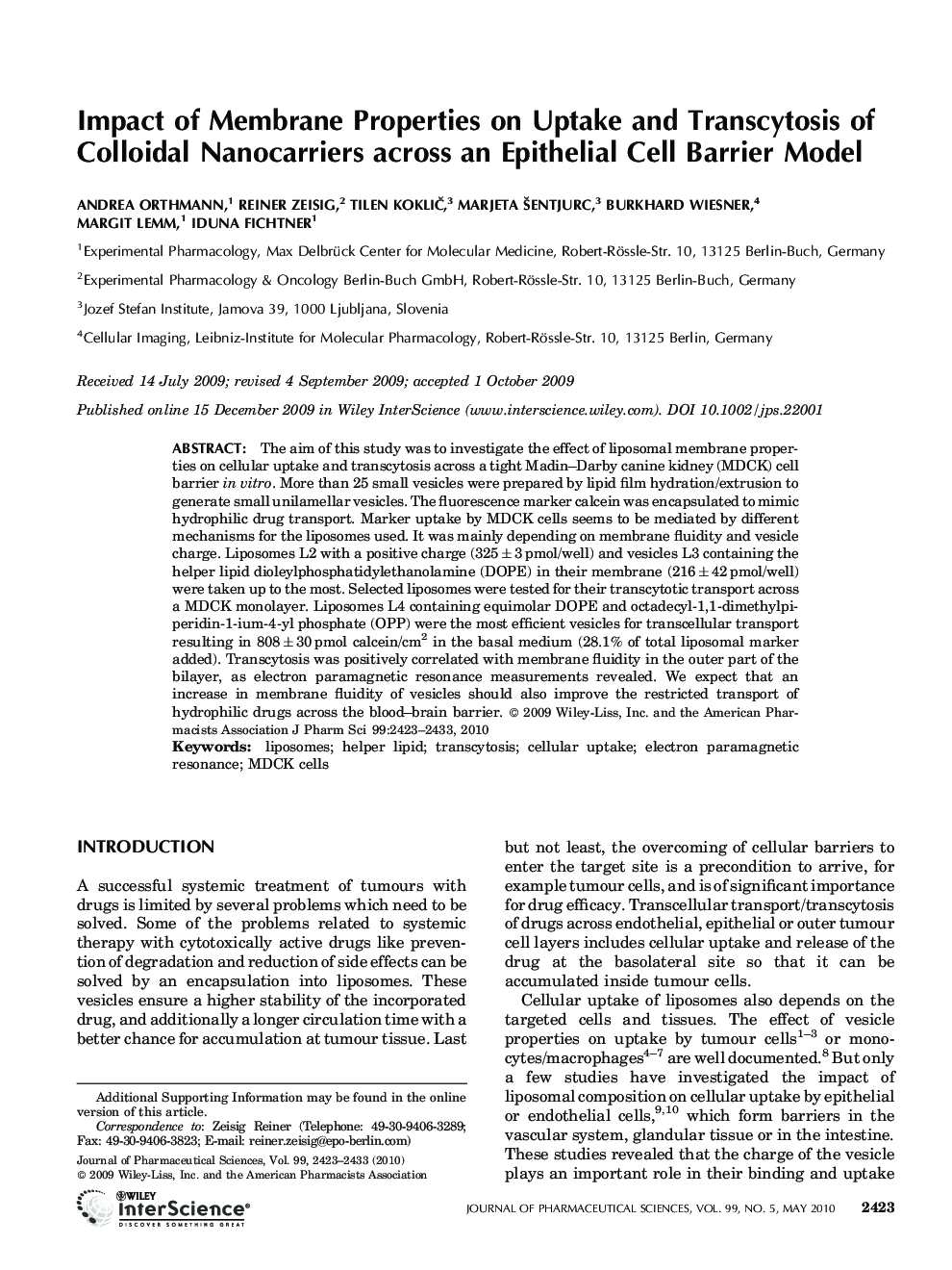| Article ID | Journal | Published Year | Pages | File Type |
|---|---|---|---|---|
| 2485911 | Journal of Pharmaceutical Sciences | 2010 | 11 Pages |
Abstract
The aim of this study was to investigate the effect of liposomal membrane properties on cellular uptake and transcytosis across a tight Madin-Darby canine kidney (MDCK) cell barrier in vitro. More than 25 small vesicles were prepared by lipid film hydration/extrusion to generate small unilamellar vesicles. The fluorescence marker calcein was encapsulated to mimic hydrophilic drug transport. Marker uptake by MDCK cells seems to be mediated by different mechanisms for the liposomes used. It was mainly depending on membrane fluidity and vesicle charge. Liposomes L2 with a positive charge (325â±â3âpmol/well) and vesicles L3 containing the helper lipid dioleylphosphatidylethanolamine (DOPE) in their membrane (216â±â42âpmol/well) were taken up to the most. Selected liposomes were tested for their transcytotic transport across a MDCK monolayer. Liposomes L4 containing equimolar DOPE and octadecylâ1,1âdimethylpiperidinâ1âiumâ4âyl phosphate (OPP) were the most efficient vesicles for transcellular transport resulting in 808â±â30âpmol calcein/cm2 in the basal medium (28.1% of total liposomal marker added). Transcytosis was positively correlated with membrane fluidity in the outer part of the bilayer, as electron paramagnetic resonance measurements revealed. We expect that an increase in membrane fluidity of vesicles should also improve the restricted transport of hydrophilic drugs across the blood-brain barrier. © 2009 WileyâLiss, Inc. and the American Pharmacists Association J Pharm Sci 99: 2423-2433, 2010
Related Topics
Health Sciences
Pharmacology, Toxicology and Pharmaceutical Science
Drug Discovery
Authors
Andrea Orthmann, Reiner Zeisig, Tilen KokliÄ, Marjeta Å entjurc, Burkhard Wiesner, Margit Lemm, Iduna Fichtner,
